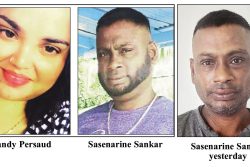A year ago the 2004 world junior champion went to the U.S. indoor nationals primed for victory but a false start left him on the sidelines while training partner Mark Jelks roared to the 60 metres title.
“He was probably physically ready (to win) last year, but he was mentally not ready,” Al Hobson, Williams’s coach, told Reuters in a telephone interview from Kansas City last week.
“The two critical times people could have recognised him, there was a goof-up, mental mistakes,” Hobson said of Williams’s false start indoors and slow start at the U.S. outdoor nationals that left him seventh in the 100 metres.
So the coach, who was retired world-record holder Maurice Greene’s early tutor, worked on patience, starting and strength with Williams.
The reward came on Feb. 28 in the sprinter-friendly thin air of high-altitude Albuquerque, New Mexico.
A solid start, now Williams’s trademark, sent the 24-year-old to the year’s fastest 60 metres, with a personal best of 6.49 seconds, at the U.S. championships.
The triumph was Williams’s fifth consecutive win of the season and thrust him into a favourite’s role for this week’s IAAF world indoor championships in Doha, Qatar.
“It will be hard to beat me,” Williams said, “but I don’t put it past somebody to; I can be beaten at any time.”
RIGHT ANGLE
British European indoor champion Dwain Chambers, the year’s second fastest man, is likely to be his top challenger.
“He is a good starter and a good finisher also,” said Williams.
If Williams has an edge, his coach thinks it may be the angle at which the American accelerates out of the blocks.
“It’s just like pushing a car,” Hobson said. “If you want to push a car, you can’t stand up. You can, but if you get a better angle, you can apply more force. The lower you get the more force you can apply to the ground.”
So Williams stays low for as long as he can in a race. “He is just getting to top-end (speed) at 50 metres,” said Hobson.
Getting Williams into position to be at the top of his sport has taken much longer. This is the fourth year the two have worked together.
“We changed everything,” said Hobson, even the way Williams walked. “He’s comfortable enough now that he doesn’t have to think about it.”
WORLD RECORD
Both coach and student had been expecting a time faster than Williams’s world leader at the U.S. championships.
“About 45 (6.45 seconds),” said Hobson. “He was kind of disappointed.”
There was a positive side, however.
“If I can run 49, I can run 45,” Williams said. “If I can run 45, I can run 39.”
That would equal Greene’s world record.
So how much is Williams like Greene in his Hobson-coached early days before he moved to California to train with John Smith and set world records and win Olympic gold medals?
“Both believe in themselves,” said Hobson. “Secondly, they are very dedicated. Thirdly, they think they are going to be the best in the world.”
With the world’s three fastest men, Usain Bolt, Tyson Gay and Asafa Powell, not competing indoors, Williams’s best chance of emulating Greene may well come this weekend in Doha.






